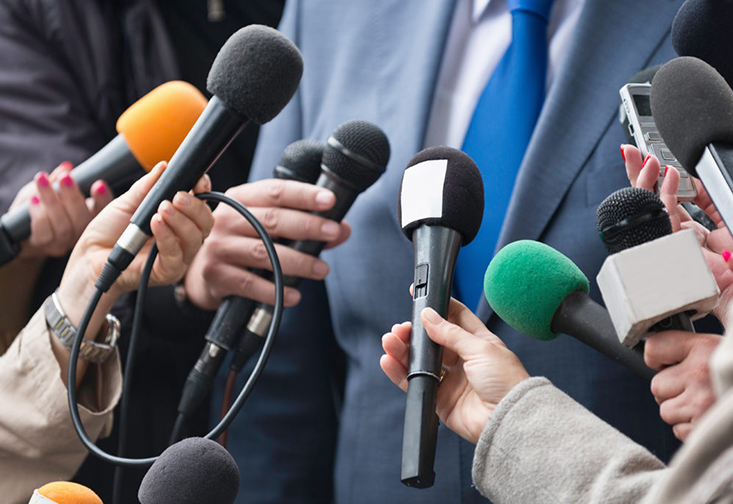In times of crisis, a safe and prepared public is a well-informed public. And yet, as the new coronavirus spreads across the country, another viral threat proliferates on the internet and seeps into earnest conversations: misinformation.
False stories have emerged over the past few weeks claiming that COVID-19 is caused by 5G cellular networks (it’s not), can be prevented by sipping hot liquids (it can’t) and was released as a bioweapon (it wasn’t). Far from harmless hearsay, experts say these stories distract from the facts and evidence-based guidance provided by the Centers for Disease Control (CDC) and others.
Unfounded speculation is not unique to the present moment, but false stories can spread like wildfire in our social media age, and during a crisis our fears and suspicions become kindling for the blaze.
“At times when people are unsettled, frightened, uncertain and looking for answers, that’s a particularly easy time for misinformation and disinformation to spread,” said Deni Elliott, an ethicist and journalism professor at USF St. Petersburg.
Elliott describes misinformation as unintentional untruths and disinformation as purposeful lies meant to disrupt social order – both of which can have adverse effects on public health, particularly during a pandemic. The best defense against these false stories is factual information from reputable sources, she added.
Communicating accurate public health information is something of a calling for Linsey Grove, a visiting instructor and health sciences program coordinator at USF St. Petersburg. For the past few years, Grove has co-hosted Viral, a public health podcast that blends humor, history and health communication.
Launched on March 16, the latest Viral episode sees Grove and her co-host Quinn Lundquist, a public health professional, discuss the new coronavirus pandemic and subsequent public health response. Diving into concepts such as flattening the curve, the self-described “public health nerds” help listeners better understand the crisis at hand.
There’s a lot of nuance to communicating about public health during a crisis, according to Grove. On one hand, you want to convey the gravity of the situation without scaring people into a panic. On the other hand, you want to reassure the public without lulling them into a false sense of security.
“In a way, public health communication means you have to be an anthropologist, marketer, scientist and even a charmer,” she said. “We want people to understand they’re susceptible and understand the severity, but we have to put it in a cultural context as well. So, while a three-percent mortality rate [for COVID-19] might not seem like a lot, we have to figure out how to contextualize that to communicate its severity.”
Grove stressed that a podcast alone won’t help prevent a public health crisis. Her hope, however, is that projects like Viral can help make public health experts more trustworthy and accessible.
“A podcast won’t make someone wear a facemask,” she said. “But if we show people the value of public health we can start getting more people to trust and value our profession.”

Although false stories have a tendency to run rampant during crises, Elliott thinks we are currently well-equipped to confront misinformation and disinformation by adopting practices similar to the ones we’ve picked up to slow the spread of the coronavirus. In a few short weeks, we’ve learned to modify our habits and behaviors, putting public health over personal convenience. Rather than attend face-to-face meetings, many of us call in remotely. Rather than rub our eyes because they itch, we wait until we can wash our hands.
“I think we can develop similar discipline to stop, restrain ourselves and look at information in a different way,” said Elliott. That is, instead of spreading potentially false stories, we can spend a minute checking sources and verifying the information.
The problem is that misinformation and disinformation can be hard to spot. Oftentimes, they seem to come from a seemingly reliable source, such as a friend’s brother-in-law who works in a hospital. But information often changes as it travels between sources, like a message that mutates as it’s passed along in the game, telephone.
Elliott offers a few suggestions for avoiding and identifying false stories.
- First, get information from a credible source. That may include a first-hand account or a well-established media site that has a history of producing accurate news.
- Second, be suspicious of news that seems too good to be true. It usually is. Likewise, question stories that seem outlandish or incredible. They usually are.
- Lastly, fact-check. Search for stories on the internet to see if they’ve been debunked or reported as true by reputable organizations.
“The only way to be a good consumer of media is to be a skeptical consumer of media,” Elliott said. “We have to be our own critical consumers.”
That said, it can be challenging to be sure what’s accurate and what’s not when our understanding of the pandemic is constantly changing. In times like these, Elliott’s advice is to trust the experts.
“The best thing that we can do is to trust the scientists and the medical researchers who know best,” she said. “And trust the journalists who have the best historical track record of getting it right.”
